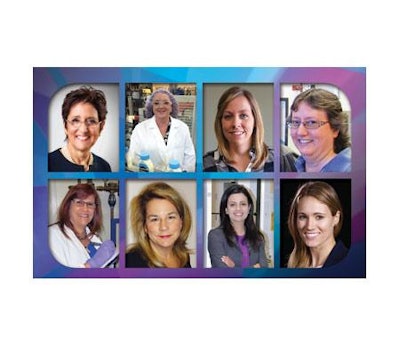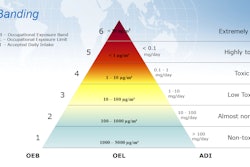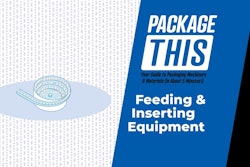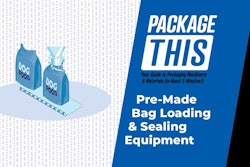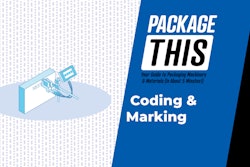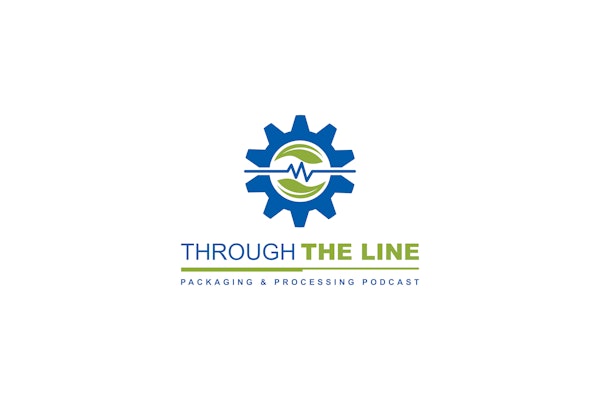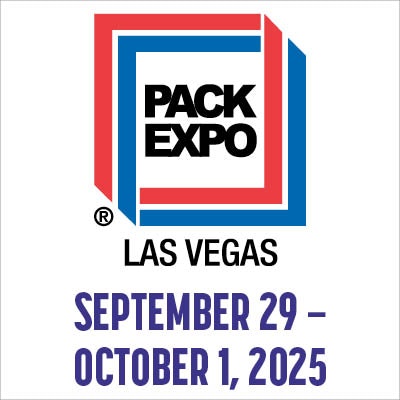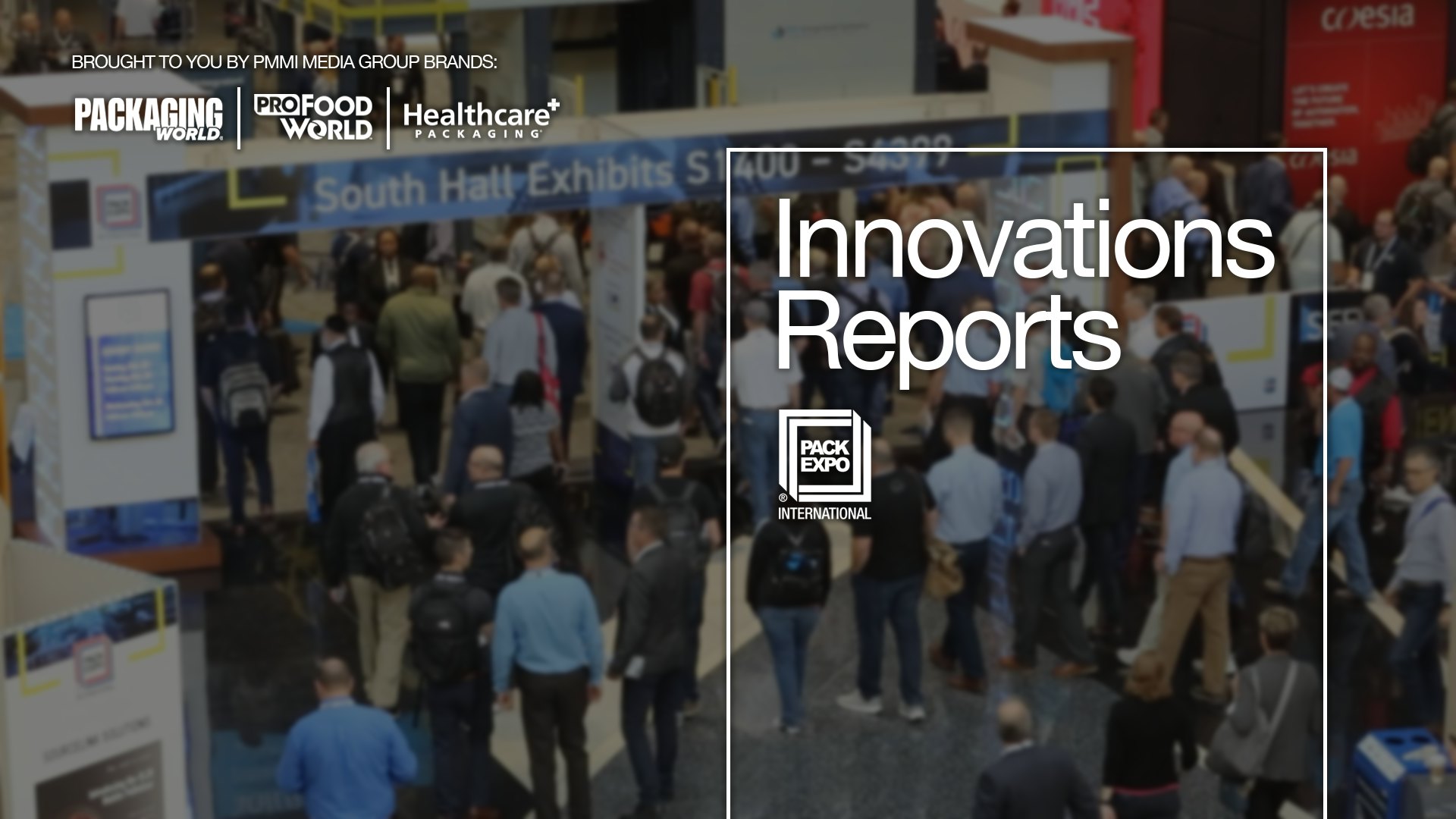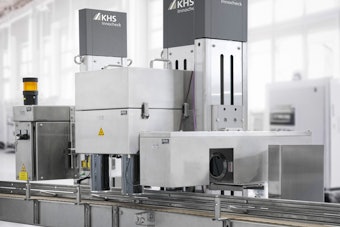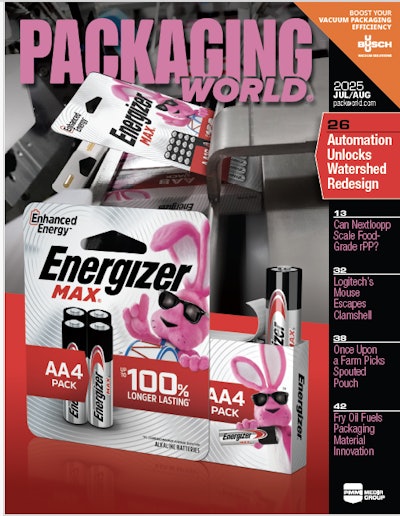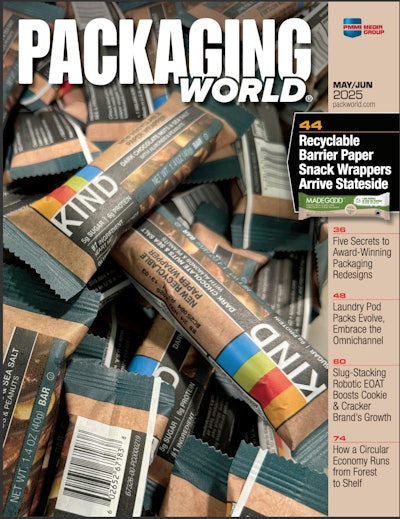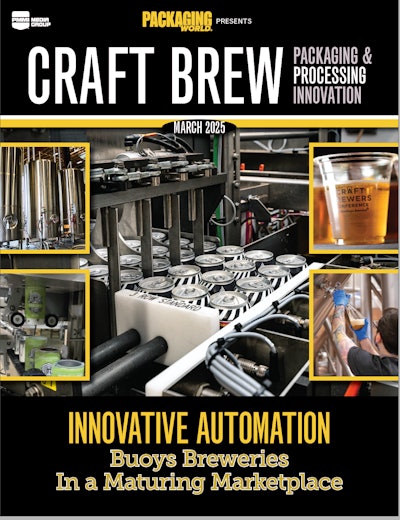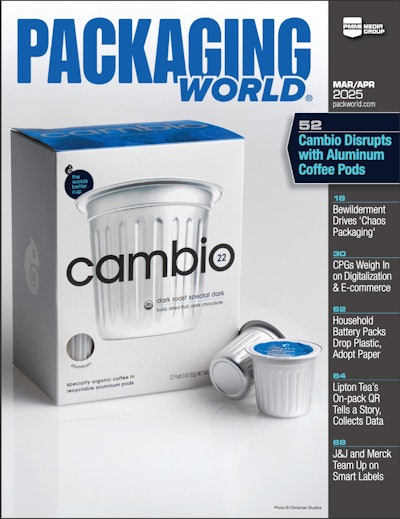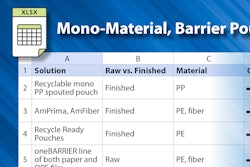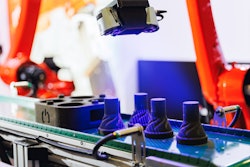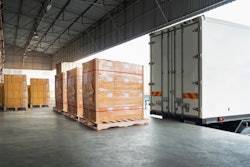Editor’s note: In Part 1 (pwgo.to/1963) of this two-part series, we asked how these eight prominent women on the operations and manufacturing side of the packaging space came to occupy their current leadership roles. In this concluding segment, we ask about signs of hope for the next generations, meeting family commitments without impairing one’s career, and what society at large and the packaging community in particular might do differently where women in manufacturing are concerned.
The interviewees
Cecilia Brock, Corporate Packaging Engineer, The C.F. Sauer Co., a maker of condiments and seasonings headquartered in Richmond, VA.
Pallavi Joyappa, Chief Operating Officer, Emerald Packaging, a flexible film converter based in Union City, CA.
Cindy Doman, Senior Packaging Engineer, Herman Miller, Inc., a maker of office furniture based in Zeeland, MI.
Erin Morris, Launch Coordinator, L’Oreal USA, a French cosmetics and beauty company based in Clichy, Hauts-de-Seine.
Ivette Larralde-Valdes, Senior QC Compliance Specialist, Noven Pharmaceuticals, Inc., a fully-integrated specialty pharmaceutical company based in Miami, FL.
Jasmine Sutherland, President, Texas Food Solutions, a Houston-based provider of HPP (High Pressure Processing) services for chilled foods and ready meals.
Laure L. Larkin, Associate Director Global Stability, R& D Analytical Science & Technology, Ethicon, Inc., a Johnson & Johnson subsidiary that designs and manufactures medical devices and surgical instruments.
Joan Cozzoli Rooney, CEO, Cozzoli Machine Co.,
a manufacturer of packaging machinery largely for the pharmaceutical industry that is based in Somerset, NJ.
PW: What signs of hope (or discouragement) do you see when it comes to women in packaging for the future?
Sutherland: It is incredibly discouraging that I have yet to be able to buy a piece of equipment from a female and I haven’t had an opportunity to work with a female engineer. However, I have met some brilliant women in food technology and product development. I’m also working to develop some of our own talent in product development and packaging and one of our bright young stars is also a young woman!
Cozzoli: Our company has been active in the Amazing Packaging Race at the PACK EXPO show. One sign of hope is right there in the ever-increasing number of female students participating in the race. Another good indicator is that our company employs more than double the number of full-time female employees than the average manufacturing company of its size. That being said, we still have less women applicants than men in certain departments, especially in engineering and production roles. I believe a great deal of work can still be done to attract more women to manufacturing companies.
Brock: The packaging industry is full of career opportunities for women, and there will always be a need for packaging professionals. I would highly recommend a career in packaging for any women interested in this field. The future is bright!
Joyappa: The dearth of women managers in the flexible packaging industry is quite apparent at industry trade shows. It is immediately assumed that a woman at a trade show is perhaps holding a marketing or customer service related position. An immediate reversal of this trend is imperative, and that can only happen by creating a positive perception and interest in manufacturing at a young age. Early exposure, mentorship, and first-hand knowledge of the industry can spark interest, and subsequently light the way to manufacturing career paths. Manufacturing companies, too, should in return open their doors to more female entrepreneurs, and show, in a coordinated effort, what manufacturing is—and what it isn’t.
Doman: I’ve been at Herman Miller for so long, I don’t really know where packaging is going nationwide. We’ve had pretty much our fair share of guys and girls come through Herman Miller. As a whole in Operations, there are not a lot of women in the areas I work in, and that’s kind of discouraging from an engineering perspective. But it also may be due just to where we’re located—it has nothing to do with the philosophy of the company.
Morris: I hope girls are exposed to opportunities within STEM at earlier stages in education—from elementary school to middle school to high school—when they are picking colleges and when they’re in college picking majors. We need to educate more people—especially young women—about the career opportunities within STEM and within engineering, packaging, and other areas, because sometimes I think it gets pushed to the side. The increasing number of females in these roles, especially at L’Oreal, is encouraging. These role models will be a lot more important in helping the next generation realize that it’s a more attractive career than it used to be.
Valdes: I still see this mainly as a male-dominated area. There are still a lot of barriers to be removed. However, currently I work for a woman who is the director of QA Manufacturing. This is tremendously encouraging to me and lets me know that women can be accomplished leaders in this area.
Larkin: Many companies are staffed with deep subject-matter experts who are on the tail of the baby boomer generation. These organizations are on the cusp of a potential loss of intellectual property via retirement attrition. This means that the managers of those organizations would be well served by making a case to add positions to include entry-level package technicians and engineers who can begin mentorship programs now. The universities are producing students with the right qualifications—it is up to industry to pass on the critical business application knowledge and skills.
PW: What’s it been like to balance career and family as you’ve moved through your career?
Sutherland: It’s always a work in progress, but I am constantly trying to balance my career and relationship. It takes choosing a partner that is patient, supportive, and very good at communicating, but also content with their own personal success so they don’t feel the need to drive or change yours. There isn’t room for envy in a team.
Brock: Thanks to my Dad, I’ve always had a strong work ethic and been career oriented. My husband and I do not have children and we both have careers, so it’s been an easy balance for us in that regard. I’ve never had the desire to be a housewife or stay at home mom. I’ve always wanted to be in the business world doing something creative. We also actively serve in our church and are involved in charity organizations.
Cozzoli: I‘m sure, like anyone—man or woman, that balancing career and family is challenging but also extremely gratifying. I’m blessed to have a career and a pretty large family. Of course it can be demanding to juggle children and work. But it is immensely satisfying to do well with your job and have your children see you as an accomplished role model as well as Mom.
Joyappa: The quintessential question! It really boils down to prioritizing and weeding out the important from the not so important. By choosing which opportunities to pursue and which to decline, women can and do engage meaningfully with work, family, and community. It is equally important that the significant other “leans in” in order to maintain a healthy work/life balance. This is imperative, as the woman runs the risk of running herself out of steam handling the daily rigmarole at work and home. In the manufacturing space, where working from home is not as widely recognized as our technology counterparts, Emerald has encouraged and provided flexible work schedules which has helped me progress along with my career as well as raise my two beautiful girls.
Doman: I’ve been very fortunate to have really good managers who, when I asked, “Can I work part-time?,” it was fine. Herman Miller also allows for flex-time, which is great. For me personally—kind of a little bit more about my background—I ended up leaving Herman Miller for about four years after I had my second child. My husband and I moved overseas. When I came back, I was home for a year and then said, “Gosh, I really need to get back to work.” And I contacted my previous boss and told him I’d love to go back to work. So I started at 12 hours, then it was 15 hours, then it was 20 hours, 25, 28, and now I’m at 30 hours. And they’ve never told me that I need to go back full-time.
One thing that working part-time, especially working during school hours, really allows you to do is focus on your work, because you know that your kids are occupied. The other thing about part-time is you have less time to chat around the water cooler, because you have a certain amount of work that needs to get done regardless of how many hours you are in your office.
The other thing that I have worked very hard at, and I’m not sure how other women feel, but I try very hard to leave work at the office, because you’re really no good when you go home if you’re burdened with all your work issues. And likewise, when I walk into work, knowing the kids are all taken care of, I can focus just on work. There are exceptions to every rule, and I can’t say it’s perfect like that all the time, but I do try to keep mixing the two to a minimum.
Larkin: I would say it was difficult. I think it is more difficult the higher you progress up the career ladder, especially with the technology advances. Earlier in my career, working long hours meant being onsite and away from my family. This was accentuated by the fact that my positions over the past 20 years have all had long commutes. To be present at critical activities required a delicate balance of planning and partnership. Still, there were activities missed that cannot be relived. In business today there is more flexibility to work remotely, which means the need for critical planning and partnership is decreased while the need for technology is increased. The end result is we find ourselves in a constant “on duty” mode. We risk falling into perpetual family attention deficit disorder, where as a parent we are physically present but mentally absent. It is an incredibly difficult balance.
Valdes: It is very challenging when the children are within school age. My son is now in High School and his days are filled with activities that sometimes run until 10 p.m. on weekdays. My husband and I have been able to stagger shifts in order to maintain the work-home balance and support our son in his activities. My husband was the one that encouraged me to go back to school to obtain the masters degree. His support is critical in my life and in my career. I would not be able to do what I do without his support.
Morris: I don’t have a family yet, but I’m working on my MBA part-time. For me it’s balancing school while working full-time. That has really forced me to develop better time management in and outside of work. L’Oreal has been great; they’ve been extremely supportive. They encourage all employees to further their education. I’m doing a master’s in business, but there are a lot of people who go back and get their master’s in engineering or in other, more specific fields. I hope the skills I’ve learned will help me when I do have to balance family and work. Mostly it involves keeping on track with projects and deadlines; you can’t really afford to get behind when there’s so much going on.
I’ve seen a lot of women here who, once they start to have a family and grow their family, decide they want to do something more part-time. L’Oreal has actually created quite a few positions that give women the opportunity to work 20 or 30 hours a week, so that they can stay home or only come into the office part-time. Also, at our corporate offices in Clark [NJ], they have a daycare that a lot of the employees use, which is also really helpful.
PW: What should society at large and the packaging community in particular (firms on the supplier side as well as those on the buying side) do differently where women in packaging are concerned?
Sutherland: Stop seeing and highlighting gender. Consumers buy good, safe, cost-effective products no matter who made them. Vision and new ideas can come from anyone, regardless of age and gender.
Brock: Always respect the person you are dealing with, whether male or female. Never go around someone to try and get your foot in the door with a company. It will only damage the relationship.
Joyappa: There has to be more effective outreach to colleges and universities that have programs in manufacturing. Women turn up in sales and marketing far more than operations in this industry, and yet women have significant roles in operations in other manufacturing sectors. We need to go after female industrial engineers coming out of schools and at the same time we have to encourage women in college to consider master’s programs in packaging like the one at Michigan State. Outreach, outreach, outreach is the only solution.
Doman: From a day-to-day perspective, absolutely nothing. I don’t want to be treated any differently than any of my male counterparts. The one thing from a family and home standpoint is flexibility. That would mean, for instance, what if your kids are sick? What if there’s a snow day? You know, giving the option to families to be able to work at home—even the men. Again, this really isn’t just for women, but should also be applied to men as well. But just having the flexibility to work at home and take a computer home, to teleconference. All those things that we didn’t have 20 years ago, but we do now, make it a lot easier.
Morris: I think the biggest thing is to make it a more attractive field for women. Right now the engineering side of STEM is still predominantly male, and the biggest reason is young girls, and even young women in college, just aren’t aware of the opportunities. I think raising awareness that not only are there jobs available, but also that there are already women in those positions, is very important. When you go to a lot of the trade shows, it’s still predominantly male. But I think the more that women attend shows or go to recruiting events where they can attest to what they do, it will definitely help.
It’s also very important that companies create a culture where women in engineering roles are supported, because especially nowadays, with job turnover, people don’t stay with a company for more than a few years. If a woman starts in an engineering or packaging role and doesn’t feel that kind of support and community, then there’s nothing keeping her there. And I think that is going to be important to remember as more women come into these fields—that it is a culture.
L’Oreal has done a great job of incorporating women into the business. Women represent seventy percent of our scientific workforce. So I’ve never felt like an outcast within my own company, and L’Oreal has always been more than supportive of the various engineering and packaging roles.
Valdes: Whether working with a woman or with a man it should not matter. The qualification of the individual is what will make them succeed or fail. Women need to ensure that they are well educated and knowledgeable about their respective field of interest. We need to educate our customers or suppliers that no matter who is their contact person, they will be receiving the highest quality and service. One place where I think there is room for improvement is in our approach to education. Here I don’t think we’re doing a very good job, at least not when I went to school. It wasn’t until I started studying for the masters (QA Manufacturing) that I was exposed to manufacturing. Locally I do not know of any programs that are assisting students by exposing them to the manufacturing world. As for income equality, this type of barrier is difficult to overcome since in general men hold the top position in most companies. Men need to change the way they think and give us the opportunity to show the world that we can be leaders. Women need to ensure that we are prepared to step up and be a leader as the opportunity arises.
Larkin: The women in the packaging community have to take the lead in getting out the message. We have to publish, present, mentor, and be visible. It’s all about setting the example. No one can do it for us. There are several programs at many of the top companies where employees mentor students. Additionally some companies partner with universities to facilitate curriculum and industry speakers to inform and inspire the students. Industry organizations like IOPP offer training and scholarship programs that also help. We need to get the word out at the high school level, telling school counselors that there are good jobs and careers to be had in packaging. I would like to see industry revisit the concept of apprenticeships. I am a classic example. I always enjoyed science but hated math when I was young. Now math is a key part of my job. The missing link to get me to be interested was the application piece. As a youth, math concepts were “hard, boring, and useless,” while applied math made sense. If we could develop an apprenticeship program we could perhaps simultaneously spark the students’ interest, keep them busy and out of trouble, create a source of income, and obtain work/study credit hours. Finally, where equality of income is concerned, I would say the same as before—the women in the packaging community have to take the lead in getting out the message. When we get into positions of responsibility, we have to make sure we enforce a concept of pay fairness within our organizational responsibility.
Cozzoli: Companies should treat female employees, buyers, suppliers, owners, etc. with respect, fairness, integrity and trust, just as they would with male equivalents. At the same time, the packaging community should try to create more ways to encourage women to go into this business. I think we’ve come a long way for women in the manufacturing workforce. The fact that you are doing a special issue on women in packaging suggests we are not there yet, but it is a good sign that you can share these amazing women’s stories of achievement!
